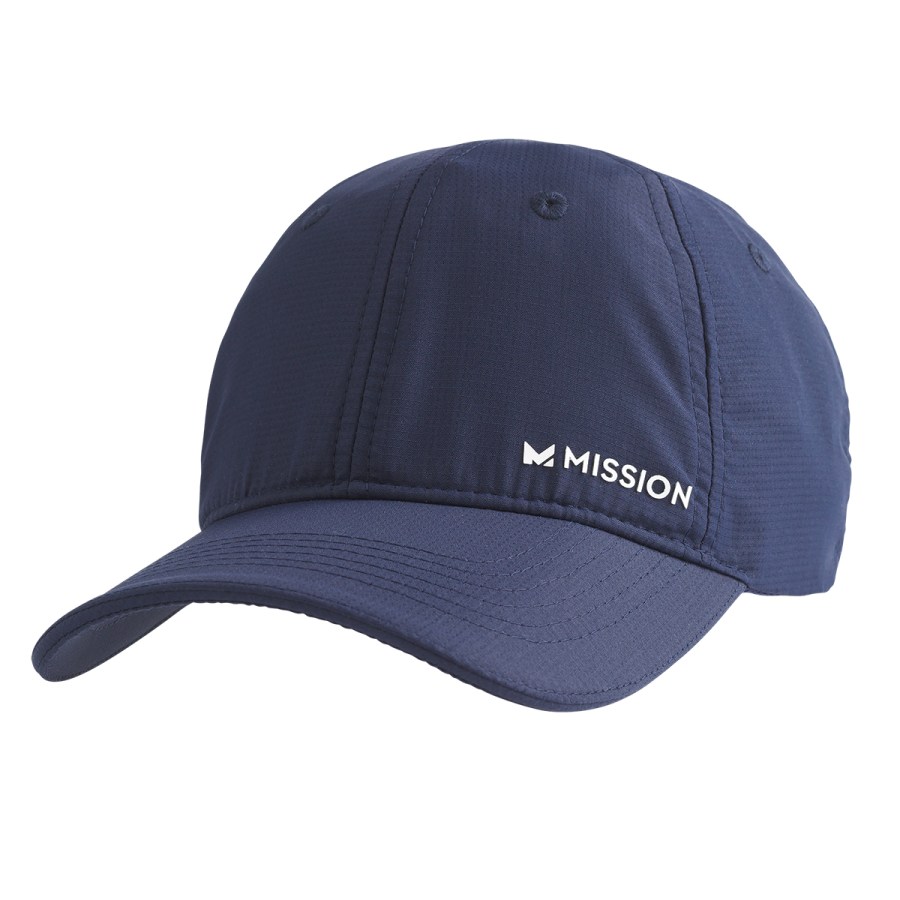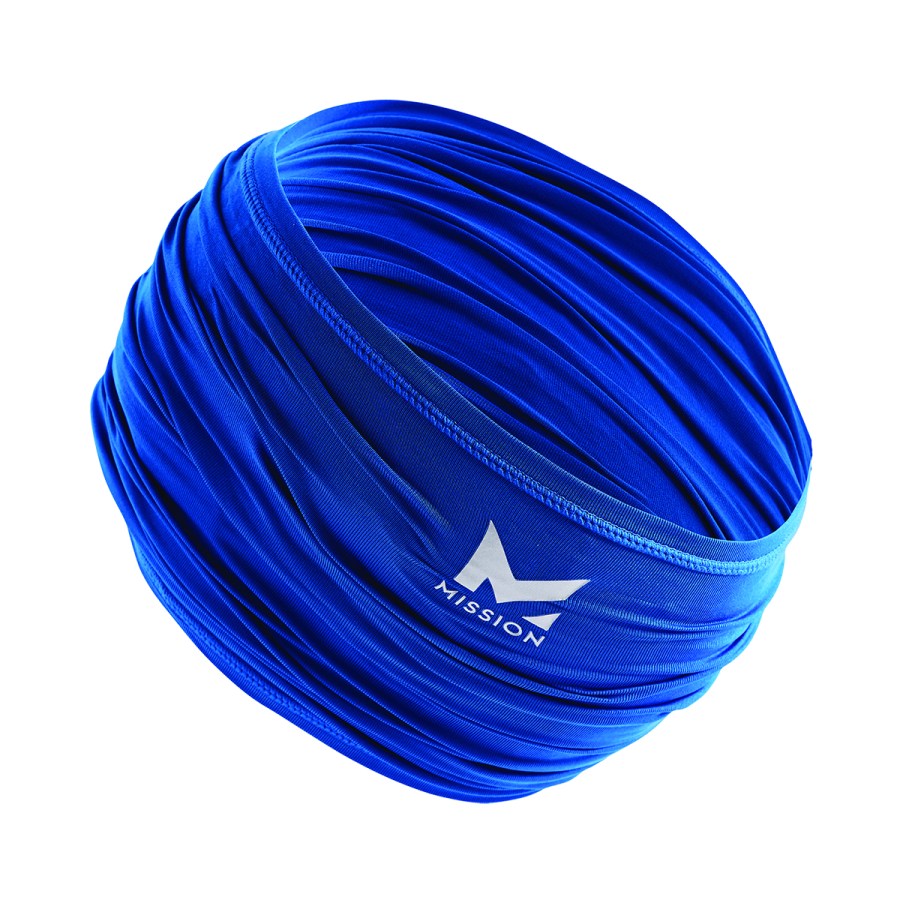Tuesday, 30 June 2020
Cooking With Bitter Gourd: 3 South Indian Recipes That May Help Boost Your Immunity
from NDTV Food - Latest https://ift.tt/2BQucu6
National Heat Safety Month
July is a time for sunshine, swimsuits and serious sweat sessions. It’s also a time to make sure we all stay cool, covered and safe. That’s why MISSION Instant Cooling Gear and their proathlete founders are dedicated to spreading the importance of National Heat Safety Month this July.
Co-founder Chris Valletta, former NFL player, experienced heat related illness during his college and professional football playing days — so this initiative is personal for him.

Mission is so passionate about Heat Safety they invested in The Mission Heat Safety Lab at UConn’s Korey Stringer Institute. Mission products have been tested on athletes with state-of-the-art equipment like high speed treadmills, advanced bike ergometers and a comprehensive physiological monitoring system — so you know these items are legit!
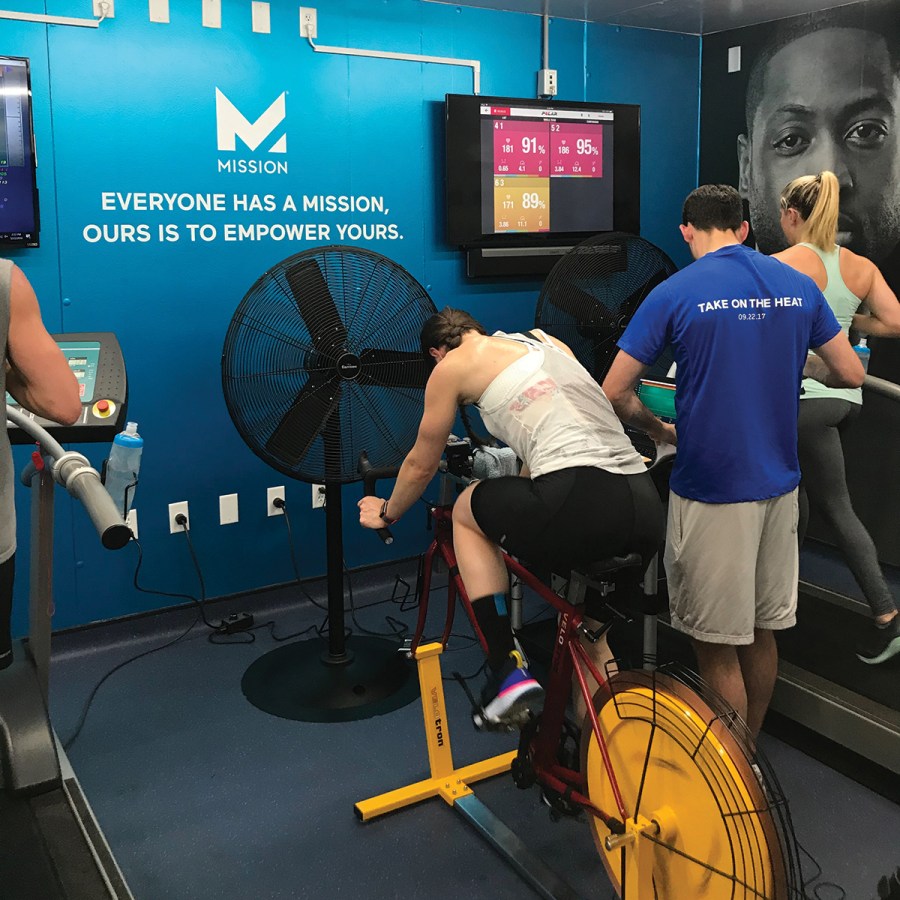
“Mission and the Heat Safety Coalition has the ultimate goal of improving heat safety in the consumer and industrial settings. These cooling products are a vehicle to get there.” —Dr. Casa, CEO, Korey Stringer Institute, Professor, Department of Kinesiology, Director, Athletic Training Education.
SAFETY TIPS FOR SUMMER WORKOUTS
Here are some tips to stay fit, cool and most importantly safe this summer with Mission Cooling Gear.
TIP 1# RUNNER’S PARADISE
Don’t forget to wear a MISSION Cooling Performance Hat to block the sun and try to avoid running outside between 10 AM and 4 PM when the sun is strongest.
TIP #2 BACKYARD FAMILY BOOTCAMP
Look for a shaded area where you can all get a little family fitness in! Make sure to arm the entire family with MISSION Cooling Towels. Their brushed microfiber cools instantly.
TIP #3 DOG DAYS OF SUMMER
Even moderate workouts like taking your furry BFF Gaiter to stay safe for a stroll are more intense during the summer months. Rock this MISSION Gaiter to stay safe and cool. And don’t forget water for you and your pet.
Mission Cooling Gear available at Walmart, The Home Depot, Target, CVS and Mission.com
from Men's Journal https://ift.tt/3eNOZwR
An Elevated Spirit
Everyone has their spirit of choice, but not many can say that theirs comes with added health benefits. If tequila isn’t your favorite spirit, you may want to rethink your go-to drink.
100% agave tequila is one of the cleanest liquors out there and, when consumed in moderation, can actually improve your overall health. So, drink up (responsibly, that is) and enjoy in more ways than one.
LOW CAL + GLUTEN FREE
For the calorie conscious, tequila is the way to go with around 60 kcal per shot — much lower than wine, champagne and hard seltzers. 100% agave tequila is also gluten free and even helps aid in digestion by promoting growth of good bacteria.
GOOD VIBES ONLY
Contrary to other spirits, tequila is an upper rather than a downer, so it’s more likely to elevate your mood. It also contains less congeners (fermented products found in most spirits), which is much less likely to give you a hangover the next day.
SWEET DREAMS
Relaxation and calming are also some of the positive effects of tequila. A small amount before bedtime can reportedly help you fall asleep faster and sleep more soundly.

100 COCONUTS: A NATURAL TURN UP
Ready to turn up and reap some bonus health benefits? 100 Coconuts has infused 100% agave tequila into their delicious 100% Pure Coconut Water for the best results you could ask for in a cocktail. Enjoyed in moderation, you can sip your way to good health all summer long! www.100coconuts.com
from Men's Journal https://ift.tt/2NMhwHg
Why the Great American Outdoors Act Matters
During this pandemic-prolonged absence of competitive sports, we can at least count on C-SPAN for a daily dose of distraction and entertainment. The cutthroat arena of political MMA that can only be viewed in the U.S. Senate recently produced a real-world underdog tale for the ages with longstanding implications for outdoor aficionados of all walks.
Earlier this month, the notoriously gridlocked chamber took a major step toward attaining what many consider the Holy Grail of conservation legislation in the modern era. Known as the Great American Outdoors Act, the landmark legislative package providing unprecedented benefits to the nation’s system of public lands passed through the Senate with a rare showing of bipartisan support and an anticipated slam dunk victory as it moves to the U.S. House of Representatives and eventually the Oval Office for the president’s signature.
Should the bill emerge triumphant, it’s the American public that will ultimately reap the spoils. Everyone from hikers to hunters, bikers to boaters, and millions more who enjoy access to America’s 640 million acres of national public lands for countless other outdoor activities and adventures will be rewarded with increased opportunities and improved infrastructure as they pursue their passions. And in states like Colorado, where the culture is largely rooted in public lands recreation, the ripple effect is expected to make an even bigger impact.
“Colorado’s public lands drive our businesses—from breweries and restaurants, to bike shops and fly-fishing guides—and inspire our adventures with family and friends,” said Steve Fechheimer, CEO of New Belgium Brewing in Fort Collins. “The passage of GAOA is an incredible milestone in ensuring protections for our environment, our economy and our well-being.”
So Just What Is The GAOA?
More than 20 years in the making, the Great American Outdoors Act (S.3422 ) ultimately combines two pieces of public lands legislation. The first piece, dubbed the Restore our Parks Act, establishes a five-year trust generated by revenues from energy development that provides up to $1.9 billion a year to begin addressing the more than $22 billion worth of maintenance backlogs at national parks and other public lands across the country. That includes everything from road and trail maintenance to facility improvements and even wildlife habitat.
The second piece fully and permanently funds the Land and Water Conservation Fund (LWCF) used to buy and improve public land. The fund, which is supposed to receive $900 million a year from offshore drilling royalties, is regularly raided by legislators and has only been fully funded twice since it was established in 1964.
Throughout its history, LWCF funds have been used to acquire and improve public lands in every county of every state, everything from New York’s Central Park to Yellowstone National Park.
When Does It Take Effect?
Once the bill is signed into law by the president, full funding begins in fiscal year 2021. The LWCF has used money from offshore oil and gas drilling royalties to conserve our public lands and waters across the country for more than 50 years already, and legislation passed in 2019 guaranteed that $900 million will be collected for the fund every year. The GAOA ensures that the money will go to its intended purpose.
The GAOA also establishes the National Parks and Public Land Legacy Restoration Fund, providing federal land management agencies with critical resources to address the deferred maintenance backlog on our public lands. The fund receives 50 percent of unallocated revenues generated from energy development on federal lands and waters, providing up to $9.5 billion over five years beginning in FY2021 through FY2025.
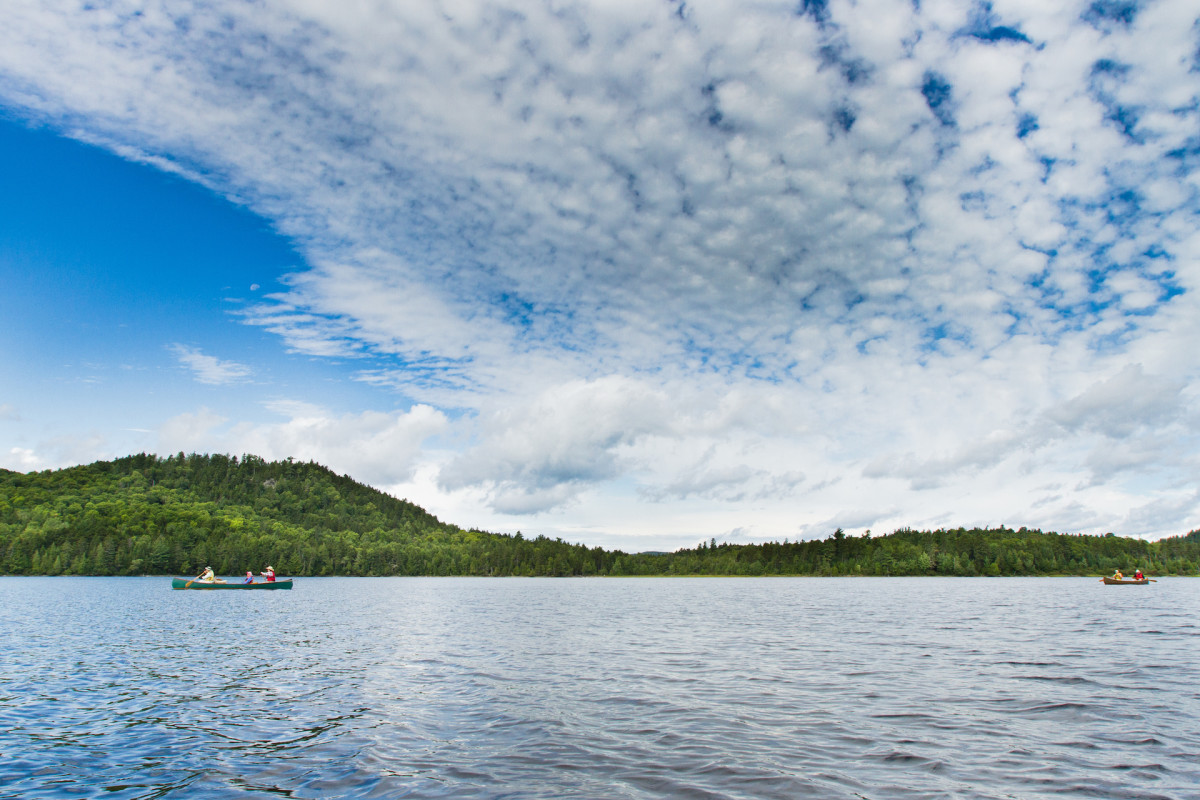
Who Benefits From It?
From rock climbers in Colorado’s Black Canyon of the Gunnison National Park to paddlers on the Allagash Wilderness Waterway in Maine, just about anyone who enjoys outdoor recreation has seen benefits from the LWCF, and those benefits will increase with the implementation of the GAOA.
Notably, the National Parks and Public Land Legacy Restoration Fund portion of the act promises funding for federal land management agencies above and beyond the National Parks Service. While the NPS will receive 70 percent of the funding ($1.3 billion a year), the remainder will be split between the U.S. Forest Service ($285 million), U.S. Fish and Wildlife Service ($95 million), Bureau of Land Management ($95 million) and Bureau of Indian Education ($95 million) to fund habitat improvement projects and other maintenance backlogs in those agencies.
“The National Parks Service maintenance backlog is the biggest part of it, but the rest of it is substantial too,” said Corey Fisher of Trout Unlimited’s Sportsmen’s Conservation Project. “The places that are most important to hunters and anglers are managed by the Forest Service and the Fish and Wildlife Service, not the National Parks. So it was super important to groups like TU to have those included.”
Additionally, the LWCF provides matching grants to states and local governments to acquire and develop public outdoor recreation areas and facilities that provide close-to-home recreation opportunities that are readily accessible to youth, adults, senior citizens and the physically or mentally challenged in urban and rural communities.
Why It Matters Now:
The Land and Water Conservation Fund has long been recognized as the most powerful program we have for conserving habitat and opening access to the nation’s most precious natural resources, and its guaranteed funding couldn’t come at a more critical time. President Trump had nearly zeroed out the money for the LWCF in budgets he’d submitted to congress in recent years, only recently coming around in favor of the program that Senate bill sponsor Corey Gardner claims supports between 16-30 jobs for every million spent in LWCF funds. Fixing the national parks promises to create as many as 100,000 additional jobs, making the Great American Outdoors Act an essential economic recovery tool that also enhances our public lands and outdoor recreation opportunities.
“The Great American Outdoors Act is an enormous victory for public lands and for rural economies here in the Mountain West,” said Teresa Martinez, Executive Director of the Continental Divide Trail Coalition. “It will address vital needs on our trails and forests. It will create jobs. And by fully funding the Land and Water Conservation Fund, it will be absolutely critical to our efforts to complete the Continental Divide Trail.”
Why It Matters In The Long Run:
The Great American Outdoors Act offers a sustainable funding solution that expands and protects valuable public lands from the impacts of overuse destined to exacerbation over time. While their popularity continues to grow, America’s national parks and public lands have been underfunded and understaffed for decades. And as urban populations swell, local outdoor recreation opportunities remain in decline, increasing barriers of entry to fundamental activities like hiking, biking and fishing that have emerged as critical ingredients in the recipe for both mental and physical health.
“With the pandemic shining a bright light on the need for equitable access to natural spaces, securing LWCF permanent funding and tackling a substantial portion of the public lands maintenance backlog will greatly increase recreation opportunities on public lands and in neighborhoods across the country, including those that have historically lacked access,” said Kate Van Waes, Executive Director of the American Hiking Society. “The House of Representatives must quickly take up and pass this legislation and send it to the president to be signed into law.”
from Men's Journal https://ift.tt/3dIKD8V
Full Body Plank Variations
Full Body Plank Variations
Another SINGLE exercise full body workout with lots of variations! You all loved yesterday’s bear crawl variations and asked for more!
PLANK VARIATIONS to try
- High Leg to knee
- Pike walk ups
- Walk ins
- Side plank circles
- Up up down downs!
No magic number or reps. Do what’s challenging for YOU! Mix and match up the moves you like!! You’ll feel these in your whole body but especially your core and shoulders!!
Are you IN?
XO,
Natalie Jill
The post Full Body Plank Variations appeared first on Natalie Jill Fitness.
from Natalie Jill Fitness https://ift.tt/31xZq48
Force The Vision
Force The Vision
I am not sure who needs to hear this today but here is what I now know as truth:
 You aren’t your current circumstance
You aren’t your current circumstance
You are not your injury or set back
You are not your bank account
You are not your past stories/events
You are not others opinions of you
You are not people’s judgement of you.
Those are things that may have happened TO you but who you are is wherever you are putting your focus and attention towards.
There was time where all that defined me was my PAST and my CURRENT circumstances. I did not understand then what “forcing the vision” meant and I did not understand that we could literally decide our future by changing our focus. This does not come easy to me still, but I’ve learned the importance of it and how to shift myself out of funks with this knowledge.
Focus your attention to what you want to CREATE. Direct your attention and energy to who you want to BECOME. That is who you are.
XO,
Natalie Jill
PS PS The next Full Body Reset LIVE starts in just 2 weeks! Reserve your spot HERE
The post Force The Vision appeared first on Natalie Jill Fitness.
from Natalie Jill Fitness https://ift.tt/3g65ncu
The Most Epic and Remote Adventures to Experience on All 7 Continents
When travel becomes more ubiquitous (and safe) again, you’ll likely want to prioritize remote adventures. We found the most epic trips on all seven continents, from Ethiopia to Italy and beyond to give you some inspiration.
The Most Epic and Remote Adventures to Experience on All 7 Continents
Tuscany, Italy: An Adventure Renaissance
Even just saying the word Tuscany feels relaxing. But don’t mistake this part of Italy for being only about vineyard tours and villa escapes. The region has long been an under-the-radar haven for plucky Italians seeking out an adrenaline buzz, as I learned last year.
Mountain ranges like the dramatic Apuan Alps, which rise 6,000 feet from the Mediterranean Sea, and dormant volcanoes like Monte Amiata provide thrilling downhill mountain-bike runs and networks of forest hikes. There are quiet roads and gravel trails for road cycling, plenty of crags and ridges for climbing, and even canyoneering in narrow river canyons. Tuscany also has 140 miles of coastline for sailing, kayaking, or SUP-ing. Best of all, the region is chock-full of geothermal activity, meaning it’s littered with (mostly free) hot springs like those in the town of Saturnia, where hot sulfur pools are perfect for sore muscles. And yeah, there’s no shortage of vino to relax with, too. — Yvonne Gordon
1. Bike Parking
Monte Amiata ski resort has a beech forest with, come summer, 22 miles of downhill trails. Stay at the Hotel Le Macinaie ($55 per night), across from a local bike park.

2. Estate Planning
If you’re headed to Tuscany, R&R is a must at some point, and there’s no better place than Villa Barberino, which dates to the 14th century and has a pool and gardens overlooking a peaceful valley.

3. An Elba Escape
The Ligurian Sea coastline is stunning, with the Tuscan Archipelago’s seven islands just offshore. You can sail to the largest, Elba, by taking a boat from Piombino, then hike to the top of 3,343-foot Monte Capanne. It may be the Mediterranean’s best view.

Iberá Nature Reserve: Rewilding in Remote Argentina
This winter, while snapping a photo of a caiman—basically a South American alligator—in northern Argentina’s Iberá Nature Reserve, I was reminded of why this part of the world is so, well, wild. While stretching out my arm to snap a pic of the animal, which was maybe 10 feet away, I realized that my extended hand was hovering a foot above an even bigger caiman, obscured by the water. I nearly upended the kayak recoiling at its murky marble eyes.
But instead of chomping the iPhone out of my hand—and my arm along with it—it didn’t even seem to notice me. And that was my experience with nearly all of the animals I witnessed: curiosity rather than concern. This was undisturbed nature, where human presence is a novelty—and a sign that years of dedicated conservation work has paid off.
Iberá, a labyrinth of forests, grasslands, and shallow lagoons, is one of the world’s largest wetlands. Yet its name barely even registered two years ago, when a huge swath of it became a national park. Now tourists are catching on that there’s a swampy slice of Argentina that’s ripe for safari-style adventures to see giant anteaters, marsh deer, and capybaras, the world’s largest rodents.
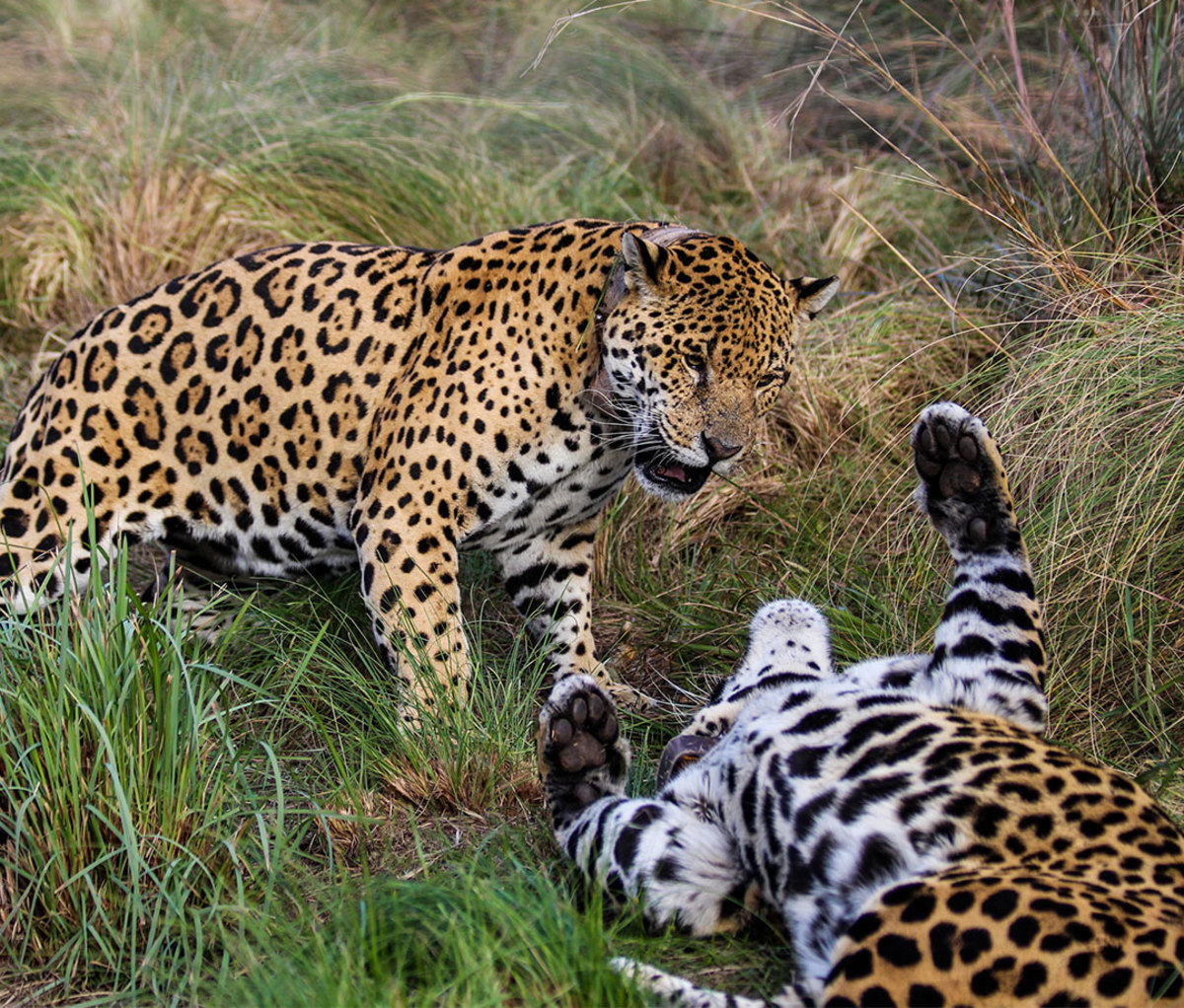
When I arrived after an overnight bus ride from Buenos Aires, the sun burst out of the pancake-flat wetlands as we raced rheas, a cousin of the ostrich, down red-dirt roads. The HQ for the nonprofit behind Iberá is Rincón del Socorro, a grand old estancia outfitted with timber furnishings and thick-framed animal portraits on the walls. It is the creation of Kris Tompkins, the former CEO of Patagonia, and her late husband, Doug, the co-founder of The North Face. Together, over two decades, they acquired private land that was ultimately donated to the federal government to create the park.
What were once rice fields and cattle ranches is now ground zero for the largest and most ambitious rewilding project in the Americas. Five locally extinct or endangered native species—including the pampas deer, giant anteater, and green-winged macaw—have been reintroduced since work began in 2007. The project will enter its next phase this year when as many as five young jaguars are released on the remote San Alonso Island. It’ll be the first time in over half a century that the wild cats have roamed this part of Argentina.
THIS IS UNDISTURBED NATURE, WHERE HUMAN PRESENCE IS A NOVELTY.
The project’s communications director, Rafael Abuin Aido, says that reintroducing the apex predator will be the ultimate test of the ecosystem’s health. If it works, he says, “Iberá has the potential to become the best destination in the world to see a jaguar in the wild.”
While staying there, I contented myself with evening paddles to the floating reed islands of Fernández Lagoon, where I tracked marsh deer and stumbled upon capybara mud baths. Mornings, I hiked along the 6.5-mile Sendero Lobo Cua, which skirts through a palm forest pulsating with the guttural roars of howler monkeys.
The air in the park was thick and herbaceous. More than once, I was tempted to dip my feet into one of Iberá’s 75 lagoons, but then thought better of it, remembering stories I heard in the lodge of old hunters who cooled off in the waters only to reemerge half-eaten by piranhas. Yes, this is unspoiled nature—in all its savage beauty. — Mark Johanson

Omo River, Ethiopia: Camping With Remote Tribes
When your dance partner has an AK-47, you choose your moves carefully. I learned this on my fourth night in Ethiopia’s Omo Valley, where a local people, the Mursi—known for the plates the women put in their lips—have decided to throw an impromptu dance party. A bonfire is ablaze, and a circle forms. I don’t understand the words of the songs, but I clap along to the rhythm. It doesn’t take long before a statuesque man, face painted white, approaches and begins to stamp the butt of his gun at my feet. I look around alarmed, then realize that this is the Mursi gesture for “Do you want to dance?”
Only a tiny number of travelers—just a few thousand—come to the Omo Valley each year, and the majority descend on markets and villages east of the Omo River to snap a few photos of the area’s famously adorned tribes (and often pay for the privilege). Then there are the 50 or so visitors, like myself, who take a boat to the remote, crocodile-infested Omo Delta and stay at Lale’s Camp, the only seasonal tourist camp in the valley. The fig-shaded camp—a sustainable tourism collaboration between outfitter Journeys by Design, Wild Expeditions, and Lale Biwa, a member of the local Kara people—offers what may be Africa’s most unique cultural experience: one where village life goes on around you, not for you.
The REASON TRAVEL IS SO TRANSFORMATIVE IS NOT THE LOCATION: IT’S THE PEOPLE.
A trip to the area starts in the capital of Addis Ababa, followed by a charter flight to the Omo Valley. After a boat ride up the river, seven spacious tents await, each equipped with running water, electricity, and flush toilets. It’s a cushy base for being so remote, but the real luxury is the location next to Dus, one of three settlements belonging to the Kara community. When our boat docks at Lale’s Camp, dozens of curious children escort me to shore, where a body-painting ceremony is already taking place. The adults, so engrossed in drawing ocher dots and charcoal stripes on each other, barely acknowledge my presence.
During my five-day stay, I also visit neighboring communities. A 4×4 ride from Lale’s Camp to a nearby Hamar village doubles as a wildlife safari, with Lale pointing out a leopard tortoise and dik-diks, tiny African antelopes. Similar to the Kara, the Hamar are known for decorating themselves with elaborate beads and body paint. Lale invites me into a hut where the men are passing around a gourd filled with a fermented brew. The homemade hooch is a staple of the Kara’s bull-jumping ceremony, a rite of passage where young men run naked over the backs of bulls lined up in a row.
To meet the Mursi, we travel three hours upriver by boat to a no-frills camp.
The Mursi walk eight hours down from the mountains and set up camp alongside us. In return for this meeting, Lale has brought them razor blades (used for scarification), food, and other supplies. The morning after our dance party, while walking among our hosts, I notice the women giggling while mimicking my terrible dancing. When one girl slips a plate into her stretched-out lower lip, I instinctually grab for my iPhone, then stop. Photos are discouraged here to help prevent locals from pandering to people like me. But the practice is beneficial to tourists, too. Standing there laughing with the women would not have been possible if I was focusing my gaze through a lens. Instead, I was able to fully immerse myself, to laugh along with them.
The reason travel is so transformative, after all, is not the location. It’s the people we meet and our candid interactions with them—even if it’s only through smiles, gestures, and, yes, some bad dance moves. — Jen Murphy

Antarctic Peninsula: Sailing the Coast of the Last Continent
Deception Island, off the northern tip of Antarctica, must count as one of the planet’s most freakish places. The hulls of 1900s whaling boats rest in the black sand while big blubber boilers fade on the beach like props in a steampunk dream. It’s a doughnut of land, a flooded caldera with a bay in the center where the active volcano there once heated the water high enough to strip the paint off ships.
A trip to this part of the Antarctic Peninsula—an 800-mile-long pinkie ringed with crabeater seals, chinstrap penguins, and colossal ice—is all about the boat, and ours was exceptional. The SV Australis was a 75-foot yacht with just 11 souls aboard, and Deception was one of the first stops on a 17-day journey. While using the ship, operated by outfitter Natural Habitat Adventures, as our floating home base, we paddled around icebergs glowing an alien green in Paradise Harbor.

We took Zodiacs to rocky beaches for snoozes in the sun. With no real schedule to keep, we’d cut the engines to listen to minke whales chuffing through the channel and camped for a night on a dollop of ice no bigger than a rink.
In the end, though, simply being onboard proved the most memorable. Many afternoons I’d climb into the crow’s nest to watch the ice slide around the bow or hang out on the bridge as hourglass dolphins played to starboard. Come evenings, we’d sit around a large table in the stern and eat lasagna and fish prepared by a French chef. Back home, I could hardly talk about it without getting choked up. Such is the power of Antarctica. — Tim Neville
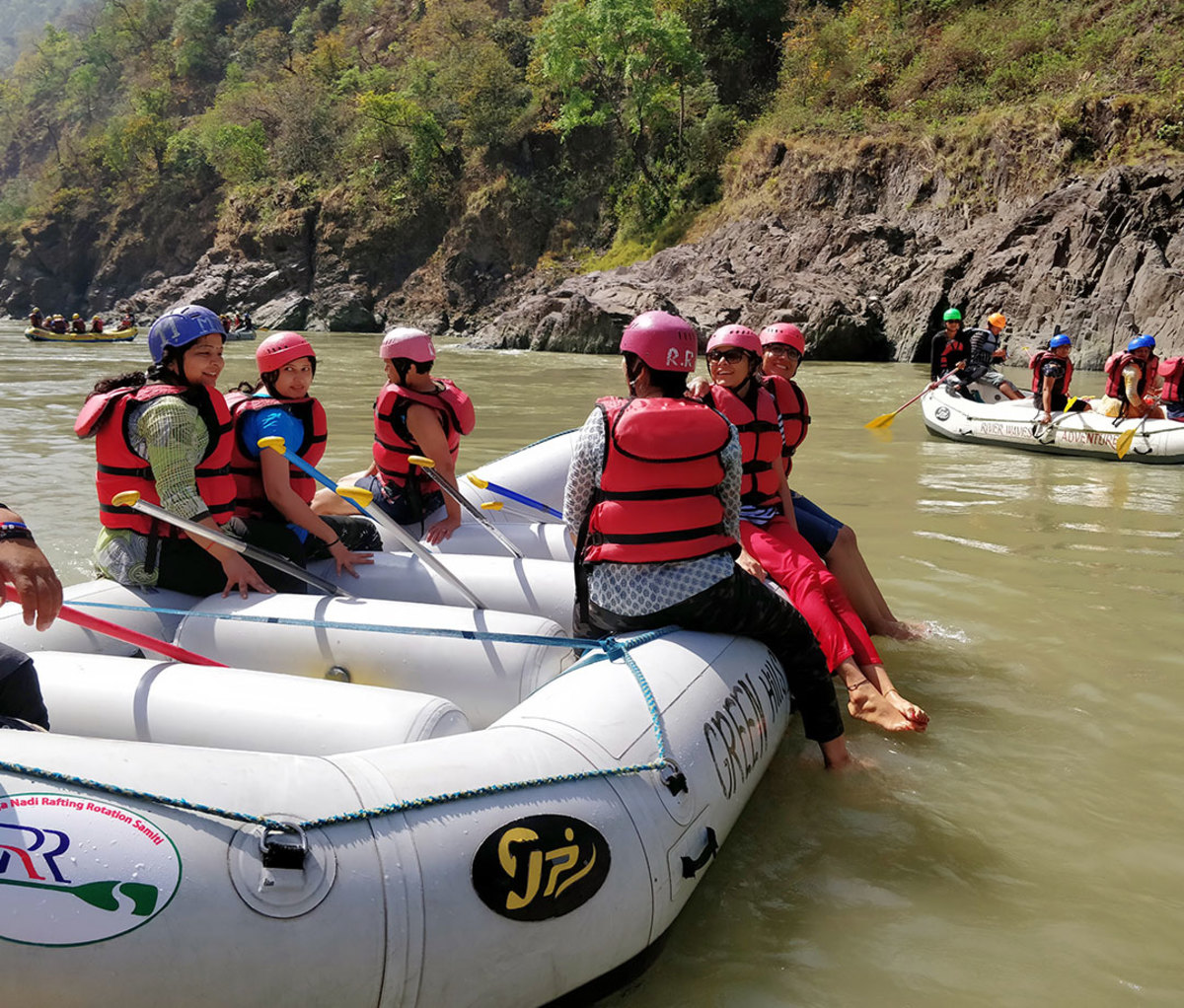
Ganges River, India: Rafting the World’s Holiest River
In India, the Ganges River is sacred water, almost a deity unto itself. It may also be toxic and full of rotting bodies by the time it empties into the Bay of Bengal. But as it gushes from its source near the Tibetan border, it’s something else entirely: wild, unspoiled, and as blue as toothpaste. Outside the Himalayan town of Rishikesh, there’s a 25-mile section perfect for rafting, too, offering challenging Class III and IV rapids, as I discovered in December.
Rishikesh is often called the yoga capital of the world. Five decades ago, the Beatles traveled here for a course in transcendental meditation and inspired a generation of seekers to the area. These days, though, it’s more about adventure. “The type of people who came here in the past were looking for some sort of spiritual enlightenment, but the perception has changed,” said Deeya Bajaj, my guide at the rafting company Snow Leopard Adventures. The outfit operates three tented camps along the Ganges and has become the de facto operator for all things outdoors in this area of the country. In addition to rafting, there are a labyrinth of mountain paths for trekking, zip-line tours across canyons, and, farther afield, wildlife safaris to see Asian elephants and even Bengal tigers.
Of course, as you travel here, you pass constant reminders of the Rishikesh of yore. There are the Westerners plucking sitars at an ashram dedicated to the late, infamous guru Osho (of Wild Wild Country fame) or the sadhus (Hindu ascetics) laundering orange robes on the river’s edge. When you wash up in town, just below the now-abandoned “Beatles ashram,” it feels as if some form of enlightenment—be it in mind, body, or spirit—was an inevitable part of the journey. But such is India, even when all you’re after is a shot of adrenaline. — Mark Johanson
Tasmania, Australia: Down Under’s Wild Island

1. Surfing Shipstern
It’s numbingly cold and a four-mile hike to the water, but when it’s on, Shipstern Bluff churns one of the world’s most challenging big waves. “Tassie” also offers numerous gentler breaks, like Clifton Beach, Eaglehawk Neck, and Bruny Island—all within a 90-minute drive from Hobart.

2. Lake Region Trout
The best sight fishing on the planet is found in Tasmania’s Western Lakes region. Here, seven-pound browns cruise gin-clear creeks and tarns, devour small frogs, and (if you can make a perfect cast) might even inhale your dry fly.

3. Upscale Digs
Set above the white sands of Great Oyster Bay, Saffire Freycinet is one of the best small hotels in all of Australia. It’s an ideal base camp for wildlife-watching hikes and kayaking or simply chilling, sampling local oysters, and sipping Tassie vintages.

Yellowstone National Park, Wyoming: Llama-Packing Into Grizzly Country
There’s a reason 4 million people visit Yellowstone National Park every year: It’s simply incredible. Bison, geysers, grizzly bears, wolves—the 2.2-million-acre park has them all. The bulk of visitors, however, don’t experience just how truly mind-blowing Yellowstone is. For that, you need to trek deep into the backcountry, and the best way to do that is via llamas—goofy, wily, lovable llamas.
Last summer, nine companions and I hiked 10 miles along Cache Creek, near the Lamar Valley, with a dozen of the animals. We caught cutthroat trout by the dozen, trekked high through pristine mountains, drank beer around campfires, and swam in frigid creeks. Mostly, though, we moved from camp to camp.
THE BEST WAY TO EXPERIENCE THE BACKCOUNTRY IS BY LLAMA—GOOFY, LOVABLE LLAMAS.
Llamas, which are bred to haul heavy stuff, proved precisely docile enough and just stubborn enough for the task. Low impact and low fuss, they knew exactly one command—“stand”—and they each schlepped 60 pounds of gear. They also had enough wherewithal to bark if they saw or smelled a predator nearby, making them an ideal guard for camp. “I sleep well with them surrounding us,” explained our guide, Thomas Baumeister, of Access Wild, a Yellowstone llama outfitter.
The llamas’ alertness came in handy on evening three. As our group sat around a campfire, the llamas, staked around camp, started to bark. We were grizzly-ready, having seen plenty of scat and other signs. We glassed the distant ridges. Nothing. An hour later: more barking. More glassing. Then a big male bison came sauntering down a bluff.
False alarm. Damn llamas! Then, as we settled back in around the fire, the yips and howls of wolves floated into camp. They were far off and of no real concern. But at least we knew. The llamas, meanwhile, just stood there, sort of barking, sort of brilliant. — J.R. Sullivan
from Men's Journal https://ift.tt/2ZjRqRo
Style Meets Adventure With the Ripton & Co. Technical Denim Cutoffs
A scrappy, rebellious, brand founded by a dirtbag bike and ski bum, Ripton & Co. might be the first company to positions cutoff jeans shorts as technical mountain biking gear. Call it hokey, but Ripton has hit a nerve with the millennial crowd. The company sold through its first order last winter. With sales of Action Jorts 2.0 proceeding at the same blistering pace, expect to see them on a trail near you soon.
Outdoor Brands Stepping Up to Support Racial Equality and Social Justice
“I never wore jeans when I lived in Vermont—they were too heavy and hot,” said Ripton founder Elliot Wilkinson-Ray, who named his company after a town in the Green Mountain State. “I moved to California, and everyone was wearing denim. It was the fancy hip alternative vibe.”
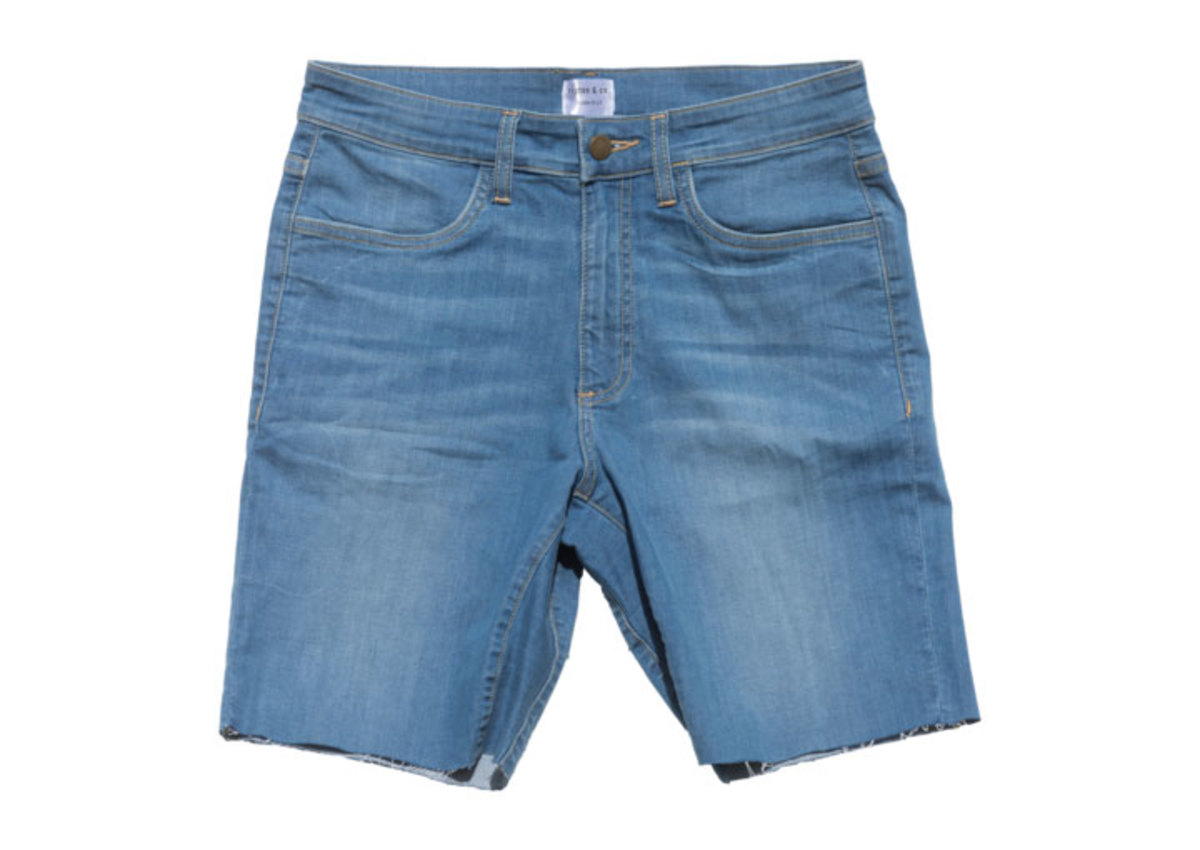
Wilkinson-Ray worked on the marketing team for California-based Kitsbow, makers of stretchy cycling jeans, and other bike commuter-styled apparel. That’s where his obsession with technical denim was born.
“Riding jeans are classic and iconic, but also work really well,” said Wilkinson-Ray. He pitched Kitsbow on jorts, and they laughed him off. So Wilkinson-Ray went back to the daily grind, eventually leaving Kitsbow’s and California for marketing jobs in Utah and Colorado, and a return to the mountains.

But jorts were still on his mind. He’d bounce the idea off entrepreneur friends, and apparel-industry friends after bike rides over beers. All encouraged him to make the shorts himself.
“One of the biggest problems with commuter apparel, whether it’s from a hip brand like Kitsbow or a historic brand like Levis, is that commuting is drab experience,“ said Wilkinson-Ray. ”I didn’t want my shorts to evoke the dread of going to work on a Monday morning, but the vibe of spending time with friends riding bikes and having fun.”
The Most Durable Cycling Apparel for Gravel Riding
With no meaningful business background or entrepreneurial experience, but strong instincts, Wilkinson-Ray finally took the plunge. He enrolled in London’s Central St. Martins fashion school to learn pattern making and product concepting.

“Other students were training to be the creative director for Gucci,” he laughed. “No one else was building a business based on cut-off jeans.” While his classmates designed dresses for celebrity red carpet events, Wilkinson-Ray scoured thrift stores for old jeans, and cut and sewed jorts. When he found a promising fabric or thought he had nailed the fit, he’d hop on his bike and hit the trails to test them.
Watch: 'At Home' With Pro Mountain Biker Connor Fearon
Wilkinson-Ray, his brother Tyler, and a few discerning friends slipped on prototype jorts and toured the world, riding across the U.S., Colombia, the U.K., Thailand, and Mexico before Wilkinson-Ray was satisfied he had found the right fabric weight for summer biking denim, and the perfect ratio of cotton to spandex so that the shorts felt good to wear, and stretchy enough without being saggy. He hired a Los Angeles, California denim maker to manufacture for him, and convinced 200 friends to pre-order, which paid for production.
Jorts aren’t’ just whimsy for Wilkinson-Ray. “We’ve added technical performance to one of the most iconic silhouettes in American apparel. Cut-off jeans shorts that fade with adventures are emotionally evocative in a cool way. We’re balancing innovation with nostalgia and form. And we’re doing it with stretchy summer-weight denim made in the U.S.A.”

I’ve been wearing them, and every time I do they put a smile on my face, and catch the eye of other shredders. And I don’t just wear them for biking. Gardening, camping, lakeside chilling, bare-leg spring skiing, and other warm-weather fun and antics are all within these shorts job description. The gusseted crotch didn’t restrict my riding or anything else. And they just feel good to wear.
That Wilkinson-Ray was able to sell through his stock of jorts in winter was an auspicious start—he launched in October and ran out by December. The Action Jorts 2.0 is available for preorder now. It’s longer, so compatible with kneepads, and available in two washes. Ripton is also selling 100 pairs of limited edition Action Jorts with an engineer stripe back pocket.
[$89, riptonco.com]
Preorder Herefrom Men's Journal https://ift.tt/2Zmt7lL
Litchi Ice Cream And Litchi Kulfi - Try These 2 Quick And Easy Recipes Today
from NDTV Food - Latest https://ift.tt/2YM6hFh
3 Healthy And Refreshing Summer Recipes By Renu Dalal
from NDTV Food - Latest https://ift.tt/2VArRuq
Soak Oats Overnight To Make Bircher Muesli For An Easy Breakfast Recipe
from NDTV Food - Latest https://ift.tt/2YM1OlQ
Atta, Ragi And More: Use These Grains To Make 4 Popular Varieties Of Rotis
from NDTV Food - Latest https://ift.tt/2CVURGr
How To Make Restaurant-Style Dahi Ke Kebab At Home (Easy Recipe Inside)
from NDTV Food - Latest https://ift.tt/31uF7UV
Twitter User Cooks 4,000-Year-Old Recipes Amid Lockdown, See Results
from NDTV Food - Latest https://ift.tt/3eHetvU
Slurp Alert: How To Make Cheese Burst Pizza Without Yeast At Home
from NDTV Food - Latest https://ift.tt/3dJbTEf
Laphroaig’s New Cairdeas Series Whisky Is a Complex and Affordable Crowd-Pleaser
One of the best deals in peated scotch today is Laphroaig’s annual limited edition Cairdeas series (pronounced “car-chuss” and meaning friendship in gaelic). This year’s “Port and Wine Casks” edition delivers proudly on a growing dynasty of tasty releases.
Cairdeas has a few things worth admiration, even amid a saturated market of limited edition whiskies: It’s always affordable (around $100); it’s always tasty (a variety of cask finishes keeps things exciting); it’s always relatively easy to find.
Past releases have showcased single wood finishes—smaller quarter casks from bourbon country, and fino sherry casks from Spain’s hallowed fortified wine producers.
This year’s “Port and Wine Casks” release keeps the streak alive with an unexpected blend of cask influences that come together in beautiful fashion. For 2020, Laphroaig blended whisky aged in second fill Ruby port barriques with a second batch of whisky aged in ex-bourbon barrels, then finished in red wine casks for about three years. According to Laphroaig, the ratio ends up being about 85 to 15, port to red wine barrels.”
Multi-element whisky finishes can get a little muddy, particularly when you’ve got more than two in the mix, but this Cairdeas does an impressive job of highlighting all three in the final product.

The bourbon barrels bring subtle lightness and sweetness to the whisky; the port casks bring heft and a chewy, mouth-coating syrupy character. But the wine is doing the real work here, bringing depth and tannin to the party, which cools Laphroaig’s typically acrid and medicinal coastal peaty character to a smoky shoreline rumble, while adding fresh, jammy intonations.
The nose of this whisky is misleading, though pleasant: It’s where you’ll find the most smoke in the entire dram. On the palate, though, the whisky becomes surprisingly herbal. Tea notes quickly become buttery whole grain toast spread abundantly with strawberry jam, before a refreshing, soft, briny finish with honey cream.
It’s hard to call a Cairdeas release an unexpected winner—their disappointments are few and far between. But Laphroaig once again has taken a number of parts and delivered a greater sum for the whole.
Cairdeas Port and Wine Casks is available for a suggested price of $100 for July, and while it’s a popular dram, we’re happy to say you shouldn’t have a problem tracking down a bottle. You can probably snag some releases from previous years here as well.
from Men's Journal https://ift.tt/2YKXGCD
High-Protein Diet: Give The Traditional Appe A Healthy Spin With Moong Dal Appe
from NDTV Food - Latest https://ift.tt/2Vwc5jU
Indian Cooking Tips: How To Make Pyaz Kachori At Home
from NDTV Food - Latest https://ift.tt/3gfhWSX
Fafda: How To Make This Popular Gujarati Farsaan (Snack)
from NDTV Food - Latest https://ift.tt/2VzLRNM
Make This Quick Onion And Garlic Pickle To Perk Up Your Daily Meals
from NDTV Food - Latest https://ift.tt/3eJJkYU
Watch: 10-Min Mango Milk Cake Mithai Without Ghee (Recipe Video)
from NDTV Food - Latest https://ift.tt/2NGsY7l
Covid-19: 5 Tips To Keep Fruits And Vegetables Clean According To FSSAI
from NDTV Food - Latest https://ift.tt/3eMFONc
Malaika Arora Gives In To Her Sweet Cravings In Her High Tea Menu
from NDTV Food - Latest https://ift.tt/2BNKPXs
Consuming Too Much Sugar May Lead To Excess Fat Storage Around Heart And Belly: Study
from NDTV Food - Latest https://ift.tt/2ZpwQ27
This Is What Sonam Kapoor Loves 'Jamming' On When Hunger Strikes
from NDTV Food - Latest https://ift.tt/31y1hFV
Monday, 29 June 2020
The Best New Climbing Gear for 2020
Yosemite National Park is now open (with limits; campgrounds remain closed). As a local climber, this means I’m taking day-trips into the nearby park and revisiting my favorite famed routes in the “Center of the Universe,” as it’s known to climbers all over the world. The park offers climbing options unmatched anywhere for their length and grandeur—waterfalls flow down giant golden granite, cracks split the rock vertically for hundreds of feet, and slender spires pepper the canyon walls.
Finally, after months of training at home on hangboards and trail running to stay fit, I’m scrambling over the boulders in historic Camp 4, jamming splitter cracks, and running up cruiser lines like the 2,000-foot Royal Arches route. The walk-off for this route snakes its way across the precipice of Yosemite Valley, following a faint climber’s trail of worn lichen before descending slabs and narrow ledges. Half Dome commands the view. The final descent gully is one of the most scenic—not to mention one of the most exposed and dangerous—areas of the park (not recommended except for the most experienced climbers).
To complete this descent safely, I wear sticky-soled approach shoes and a fleece top, as the hike is often done at last light while it’s cool outside, and I carry a fully charged headlamp that’s bright enough to help me navigate the circuitous trail and do the down-climbing sections safely.
Even if you don’t plan or execute a route this ambitious, you still want to know that your climbing gear is built to handle these rigors. And if you do want to set Yosemite National Park as your target bucket-list climbing destination, selecting the right kit is a good place to start—stocked with gear that can stand up to these long, demanding climbs, from shoes to headlamps to custom fleeces. Below are six new items that excel in Yosemite, and that can be used in any big climbing area (or even if your climbs are shorter and you’re just thinking Yosemite big).
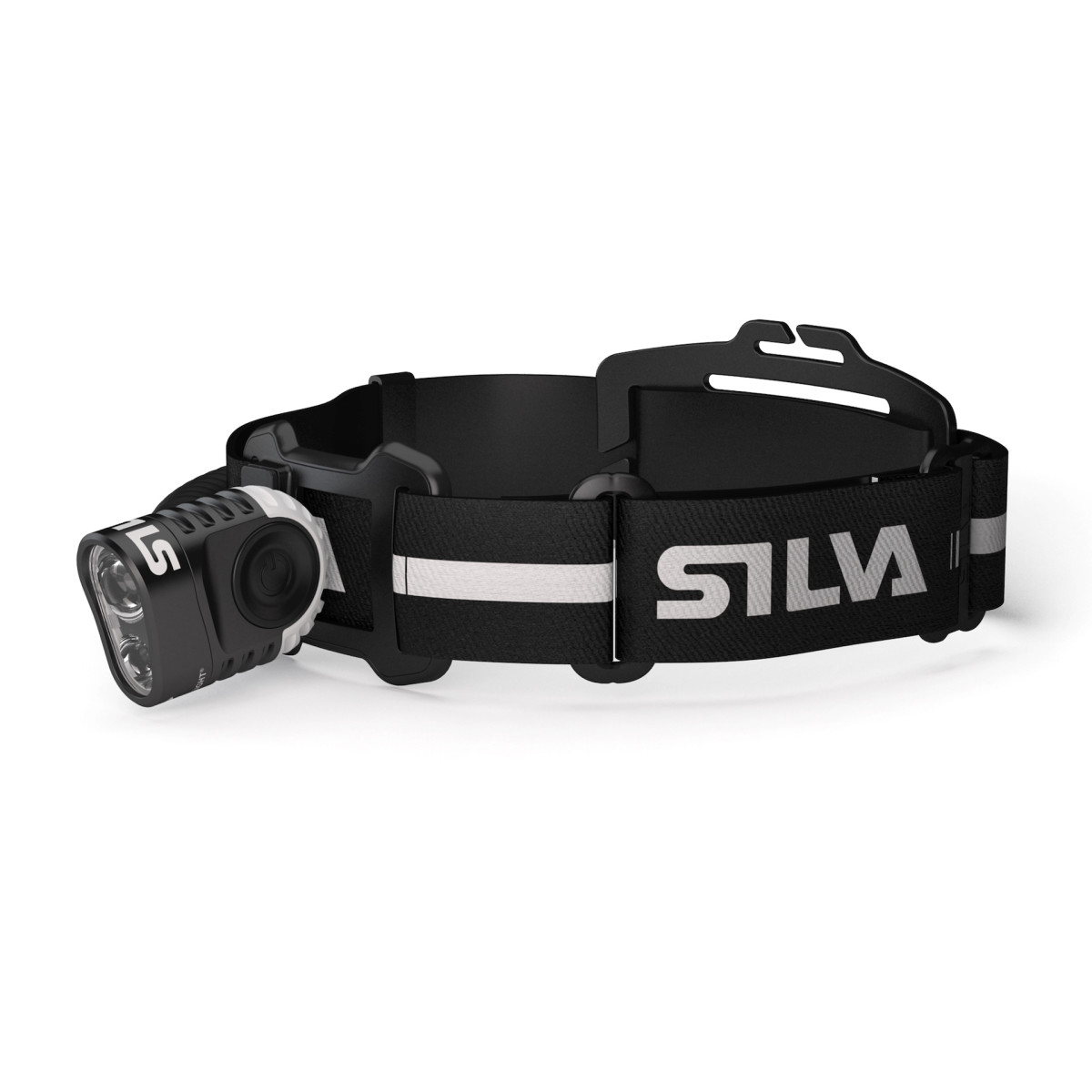
Silva Trail Speed 4XT 1200 Headlamp The Silva Trail Speed 4XT 1200 is a compact and water-resistant headlamp that comes with an adjustable spotlight and floodlight. Tilting it down makes the beam wider to cover more ground and tilting it up makes the beam narrower for long-distance focus. It has a detachable battery pack that can be worn on either the rear of the headlamp or stashed in a pack. The light and battery weigh a scant 245 grams. Light output is 1200 lumens and the rechargeable battery lasts up to 20 hours. $246; silva.se
Get it
Black Diamond Circuit Approach Shoes Yosemite lies inside a 21,000-square-mile granite batholith, which means rocks are everywhere. Black Diamond’s Circuit approach shoes are made with breathable knit uppers so they stay cool on hot days, with sticky rubber soles for scrambling over slabs, technical hiking and light bouldering. $99; blackdiamondequipment.com
Get it
AirNET Climbing Harness This no-frills harness designed for competition climbing is what the world’s best climber, Adam Ondra, uses. It’s soft, supple, comfy to hang in at belays, and it folds into a small stuff sack so it takes up little room. Utilizing Black Diamond’s latest technologies, AirNET features low weight and high comfort, plus the new low-profile Infinity Belay Loop. The AirNET harness works equally well on everything from short sport climbs to the long cracks found on El Capitan. $160; blackdiamondequipment.com

Allez Outdoor Limited Edition Upcycled Chalk Bag Generously sized so it can hold enough chalk to cover thousands of feet in a day without needing a refill, the Upcycled Chalk Bag is durable, fashionable, and comes with a large zippered pocket for keys or energy gels. Additional items from Allez include alpaca and merino wool beanies, biodegradable cleansing cloths and repair and recovery salves, with or without CBD. $30; allezoutdoor.com

PolarFleece Customizable Pullover Through PolarFleece.com, Polartec is offering fully customizable pullover fleeces in either mid-layer weight Andover or heavy-weight Shearling. These pullovers are a nod to its original release in 1981, now offered in a variety of styles and colors that are designed entirely by you, down to the snap color and pocket ribbon. Made from 100 percent recycled bottles and sewn in New England, these layers are equally at home on chilly High Sierra mornings as they are halfway up a rock dome in Tuolumne Meadows. $140 Shearling, $120 Andover; polarfleece.com
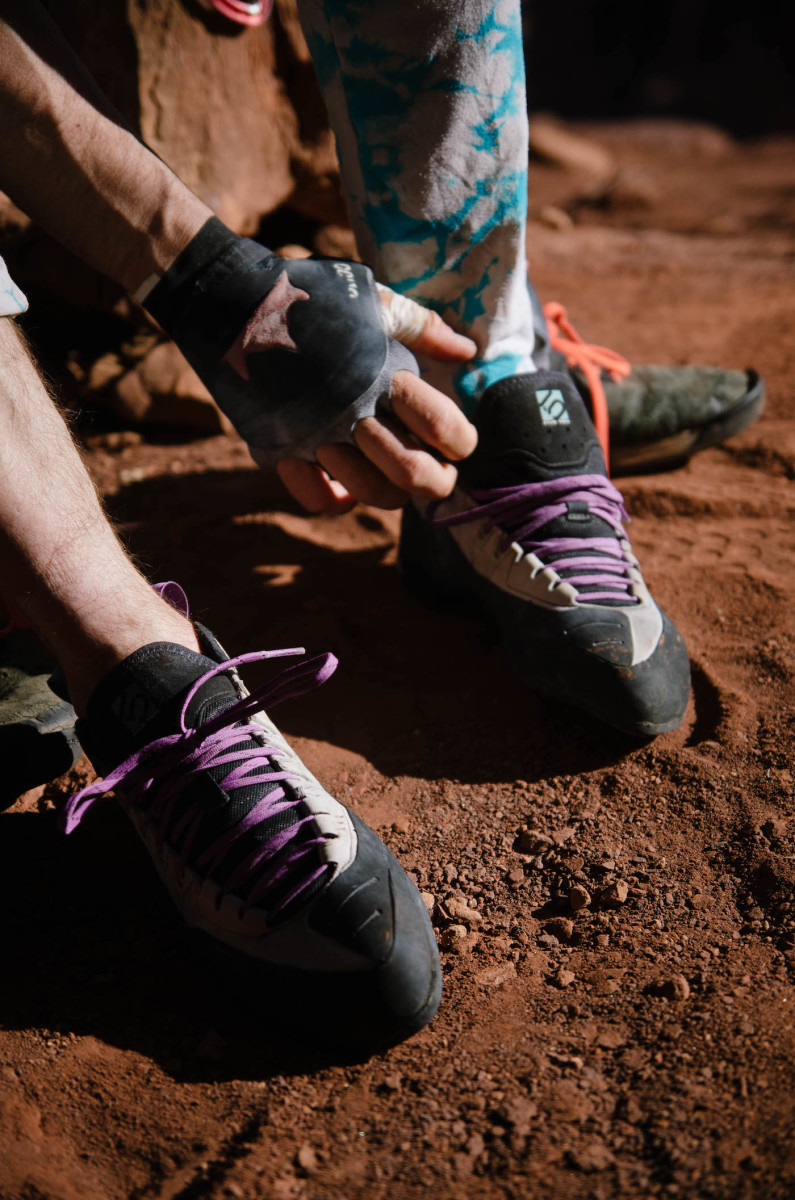
Five Ten Grandstone Climbing Shoes Founder of Five Ten Charles Cole (1955-2018) climbed the hardest big walls on El Cap and Half Dome in Yosemite. Inspired by climbing in the park, in 1985, Cole started his iconic shoe company and formulated the stickiest rubber in the world. With the shoes of his design laced onto his feet, Cole climbed demanding face and crack routes from Joshua Tree to Yosemite.
The all-round Grandstone has a protective, high-top design to protect ankles from sharp cracks, a stiff sole for all-day support, and low-stretch fit. They ship with Stealth C4 rubber, the grippy compound that put Five Ten on the map. on sale for $108; adidasoutdoor.com
from Men's Journal https://ift.tt/3dKY5JJ
Gordon Ramsay on the Wildest Adventures From His Nat Geo Series 'Uncharted'
Chef Gordon Ramsay took up triathlons to get in shape. Little did he know they’d set the groundwork for the most physically demanding TV program of his career, Uncharted. — as told to Charles Thorp
Gordon Ramsay Gets Candid: Doing Triathlons Saved My Life
In Uncharted, I’m parachuting into places for a week, trying to keep up with regional chefs on their home turf, collecting ingredients from the tops of mountains to the bottom of the ocean. The lifestyle required to be at your best for a triathlon keeps me in check. And being fit allows me to say yes to more opportunities.
Going Uncharted
I took the preparation for Uncharted seriously. In Guyana, I had to rappel 250 feet out of a helicopter, so I did a special upper-body routine with pullups and holds to help me grapple onto the rope with the rotor wash and winds. That training also came in handy in Indonesia during a traditional race called the pacu jawi, where I had to hang on for dear life between two bullocks bolting through a paddy field—getting mud and shit flung in my face. At my swim club, I’d strap weights on my arms and legs and swim 4K. That work was especially important with so much swimming in Tasmania. We were hunting giant crayfish in a stretch of coastline called the Great White Shark Highway.
Unbend It Like Beckham
I ruptured my Achilles a few years back, and that injury was one of the worst things that’s ever happened to me. Luckily, David Beckham gave me advice on the recovery. I admired the way he worked to get back to his old self, and I tried to bring that same kind of heart to my recovery. I keep my mindset super positive and remember there’s reward waiting on the other side of sacrifice. I have a three-second rule I live by: If a negative comes into my mind, I listen to it, process it, then get rid of it.
Raising the Standard
I’m trying to be an example in the food world. I miss my dear friend Tony Bourdain a lot, and I think he would be proud with what we’re trying to do—magnifying these tremendous, fascinating food cultures. I want to bring us back to the basics and out in the world where cooking means living. If I have to trek through a jungle to get there, so be it.
Stream Uncharted now on Disney+ or Hulu+ Live
from Men's Journal https://ift.tt/2Vt9nfl
Does Running Shirtless Keep You Cooler on Hot, Humid Days?
On the muggiest, swampiest days of summer, you’ve no doubt questioned if running shirtless is the best way to beat the heat. But before you start thinking about how to kit up or strip down, you should understand what happens to your body in the heat.
“When you exercise, you use energy that’s stored in your body to perform the work,” explains Samuel N. Cheuvront, Ph.D., a research physiologist who studies fluid balance and endurance exercise. “But only about 20 percent of all the energy we’re generating when we exercise actually goes toward performing the physical work; the rest of it is turned into heat.”
Your body has a limited capacity for storing that heat energy. So when your brain senses your body temperature has increased, it elicits two responses: It shunts more blood flow to the skin, where increased vasodilation—a widening of the blood vessels at the skin’s surface—prepares your body to start dumping heat, explains Chris Minson, a professor of human physiology at the University of Oregon, who studies heat acclimation responses in athletes. At the same time, your brain signals the millions of sweat glands in your body to push water vapor through your pores onto your skin, where it then evaporates. It takes energy for that liquid to shift to gas; that’s how your body gets rid of excess heat, he explains.
That process of evaporation is crucial. If you wipe sweat off or it just drips off of you, it’s not taking any heat with it. As any runner knows, it’s not necessarily the heat that makes summer running feel so hard, it’s the humidity. The more humid it is, the more water vapor is in the air, says Cheuvront. And “when the water vapor pressure of the air is greater than the water vapor pressure of your sweat, your sweat won’t be able to evaporate—it just drips,” he explains. And so all that heat you’re generating is just building up in your body with no release.
On those hot, humid runs, “the less clothing you wear, the more opportunity there is for an evaporative heat exchange between your skin and the air,” says Cheuvront. (If it’s super swampy, though, you won’t be able to balance heat production with heat loss—even if you’re running naked. In that case, you can either lessen your intensity to produce less heat, or you can seek out active cooling like running through sprinklers.)
A nice breeze and/or the natural airflow you’re generating while cruising along—called convection—can facilitate the efficiency of evaporation, even in humid conditions. “When there’s a breeze across your skin, it pushes that more humid air away from you so the air near your skin is drier,” says Minson.
Opting for more skin exposure is generally the best choice if it’s not too sunny or you’re running in the shade. But if you’re running at noon on a cloudless day, adding a layer over your skin can be beneficial. “When there’s more direct sun, that solar radiation can heat you up a lot,” says Minson—even if the air temperature isn’t actually that high. In those conditions, you want to protect the skin not just from sunburn but from solar heat gain. Wearing light clothing (no dark colors!) can help reflect or block some of those heat waves, he adds.
If you’re self-conscious about running shirtless in public, that’s cool. While all clothing is insulative to some extent (trapping air and preventing evaporation), there have been so many advances in fabric technology that you can easily find a lightweight shirt that won’t drag you down. “You want to wear clothing that has very low insulation; we call it a low-CLO value,” says Cheuvront. “It should be highly permeable to absorb sweat easily and evaporate that sweat easily. The surface of the clothing will actually be cooled by the sweat evaporation and that in turn will keep the skin cool.” Look for words like quick-drying, sweat-wicking, and breathable.
Just remember that “when it comes down to it, there’s nothing that enhances our sweating ability better than our own skin,” says Minson. And it’s hard to feel shy about shedding your shirt when you feel the sweet relief that comes with all that fresh air on your skin.
If you do want to don clothing, try these light, breathable running essentials.

Ten Thousand Distance Tank
Micro-eyelets create ventilation throughout the entirety of this tank. It minimizes cling, drapes over your body for minimal chafing, and is treated with silver ions to mitigate stink. Not a fan of tanks? Ten Thousand also makes a Distance Shirt ($54; tenthousand.cc) in the same material and sage green colorway.
[$54; tenthousand.cc]

Janji Men’s 8″ 2-in-1 Traverse Short
You don’t need thigh-baring short-shorts to stay comfortable. Janji’s Traverse Short pairs a sweat-wicking brief liner with an 8″ inseam for modesty with a woven shell short. Two elastic pockets and a loop bungee offer plenty of solutions for storage (that loop can be used to keep keys secure or a shirt should you resort to running shirtless).
[$72; janji.com]

Mission Cooling Gaiter
Neck gaiters are experiencing a surge in popularity due to the COVID-19 pandemic. They’re lighter, more breathable, and quicker to dry than bandanas and can be pulled up to cover your mouth and nose when passing pedestrians and other runners. (Pro tip: Wear a cap, then tuck the top of the gaiter into the back opening so it’ll actually stay up on its own.) Mission’s has a UPF 50 rating that blocks up to 98 percent of UV rays. If the weather is exceptionally hot, you can wet the gaiter, wring it out, then snap it to activate its cooling technology: In less than 30 seconds, it’ll cool down to 30 degrees below average body temperature. If you do this, just keep it around your neck (wetting will make it impossible to breathe through).
[$20; mission.com]
from Men's Journal https://ift.tt/3eNv8y6
